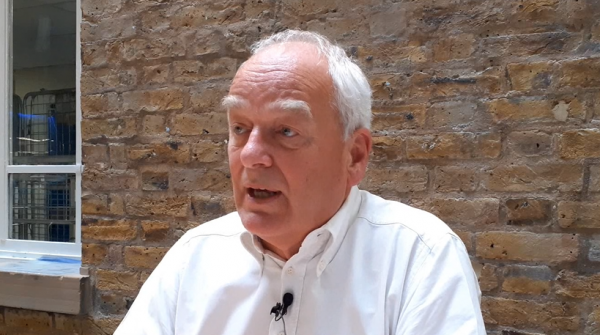An interview with Professor Simon Croft
Simon Croft, Professor of Parasitology at the London School of Hygiene and Tropical Medicine, has been involved in visceral leishmaniasis research for 38 years. Prof Croft has been instrumental in setting up the IDDO’s visceral leishmaniasis data platform, including serving as the Chair of its Scientific Advisory Committee for two years and delivering the platform’s Research Agenda with the VL research community. Here he tells us about his career, development of the platform, and why it will be crucial for future research in visceral leishmaniasis.

Tell us about your career and research in visceral leishmaniasis
I have had a long career with visceral leishmaniasis (VL), I first started working on discovery and development of new drugs for VL in 1981. During that time, I have worked at the London School of Hygiene and Tropical Medicine, as well as the Wellcome Foundation in the UK. I was also the first Research and Development Director of DNDi, the Drugs for Neglected Diseases Initiative. Throughout that time, I have had a strong interest and commitment to bring new treatments to patients. I have been successful in some ways – I was part of the teams that discovered and developed miltefosine and liposomal amphotericin B. It has been very interesting to see how they have been used, and sometimes misused, in the treatment of this disease.
What led to your involvement in the IDDO’s VL platform?
I started talking with IDDO’s Director Philippe Guérin, about three years ago on the idea of having a proper archive for all the clinical studies that have been done on VL. I have a good understanding of the types of VL clinical studies that have been conducted over the years across Europe, South and Central America, East Africa and in the Indian sub-continent.
What are your reflections on the value of the IDDO VL data-sharing model?
In terms of data management, I think the collection and archiving of the data is essential due to the range of clinical studies that have been conducted worldwide. The studies have not actually been properly compared in terms of their outcomes, the standard drugs that are being used to compare with, and the types of populations – whether they have been adults, or children. The studies have also looked at all the different forms of visceral leishmaniasis including cutaneous leishmaniasis, post Kala-azar dermal leishmaniasis and HIV and visceral leishmaniasis. It is only through collecting all the data together that the ability of the community to analyse and make meaningful inferences about the data will be possible.
On the ethical front, for me this is linked to governance. Governance is about inclusion of all stakeholders. IDDO has centrally addressed this by including members on its scientific advisory committee from all the different endemic areas. There is also a strong imperative to ensure that all the studies are archived to the best possible ethical values.
What are your thoughts on what the VL platform has achieved so far?
I think the first achievement has been the development of a research agenda, which sets out the priorities of what can be collected from these archives, what can be analysed, what outcomes can be achieved through the analysis, and most importantly how the analysis can be used to improve further clinical studies and identify where the big gaps are in our knowledge.
I think the inclusion of members of the advisory committee and also stakeholders in the development of this research agenda has been essential to building up the research community and ensuring they are invested and engaged in the purpose and outcomes of the data platform.
What do you think the future benefits will be of the VL data platform and how can it serve the wider community?
The most important, immediate issue is that for the first time in history there are six candidate drugs coming through the pipeline, three from DNDi, one from Novartis, and two from a GlaxoSmithKline/University of Dundee partnership. As these are new drugs they can hopefully be oral, be safer than previous drugs and it is essential that a platform and archiving system is already prepared so the data from these new drugs can immediately be used to compare the responses of patients, in the different regions, against the different forms of visceral leishmaniasis to the present drugs.
The second issue is that we know people in the future will want to publish in high impact journals. For this there has to be a record of where the data is archived. This will enable clinicians to have a direct archiving and numbering facility which they can refer to in their publications.
